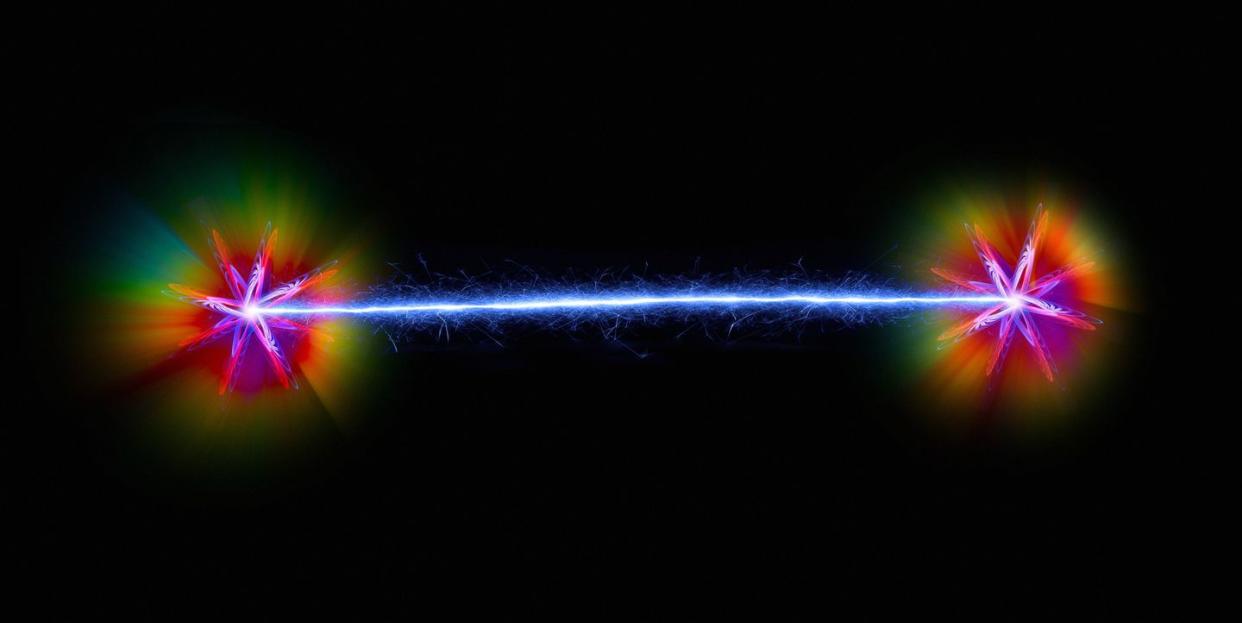The Classic Principle of Least Action Now Exists in the Quantum Realm

"Hearst Magazines and Yahoo may earn commission or revenue on some items through these links."
Researchers have proven that a fundamental law of physics applies in the quantum realm.
The principle of least action dictates that objects will (unless interfered with) always move along the route that requires the least amount of action.
Not every rule of everyday physics applies to quantum particles, but according to a new study’s difficult-to-make measurements, this rule certainly does.
The shortest distance between two points is a straight line, but the shortest distance doesn’t always mean the least work. What if that distance is straight uphill, or through difficult terrain? If you’re looking to do the least amount of work, a straight line may not always be your best bet.
Humans may not always be looking for the easiest route. But when it comes to natural movements in systems, one of the fundamental laws of physics says that objects will always travel along the route requiring the least action. In physics, “action” has to do with things like energy, momentum, distance, and time.
Basically, without outside intervention, objects travel along the path of least resistance and least change. This is called the principle of least action. We know it applies in our everyday world, and now—thanks to a new study—we know it applies in the quantum world as well.
“A physicist’s ultimate dream is to write the secrets of the entire universe on a small piece of paper and the principle of least action must be on the list,” Shi-Liang, one of the researchers on the project, said in an article for New Scientist. “Our ambition was to ‘see’ [the principle] in a quantum experiment.”
Easier said than done. The research team from South China Normal University had to contend with the fact that not only is everything in the quantum realm small and hard to see, the movements of quantum particles are complicated—really complicated. For one, quantum states change when they’re measured. And for another, they’re only able to be mapped out using very complicated math.
To best describe their behavior, scientists use a combination of two things: a wave function and a propagator. Wave functions describe the state of the particle and propagators describe how that state changes over the course of a particle’s movement in a system. The trouble is, wave functions and propagators are purely mathematical, and while they’re great at describing the behaviors of quantum particles, they often do so using imaginary numbers. Imaginary numbers are fine in math, but are—by definition—impossible to measure.
In order to get around this problem, the team used a technique that had been established a few years prior. In this technique, you basically bounce and filter individual quantum light particles called photons through a maze of mirrors, crystals, and lenses. Eventually, the parts of the photon’s behavior described by the imaginary numbers will correspond to actual measurable properties. The parts that were originally described by normal real numbers will also be measurable, and the researchers can reconstruct the wave forms and propagators from actual measured data.
Once the maze had been constructed, researchers combined that technique with a new one they developed to mostly avoid the“quantum state change when observed” problem. Then, they sent individual photons through the maze and compared their behavior to the behavior predicted by the principle of least action and found that reality agreed with theory—proving that quantum particles do in fact follow the principle.
“Measurements in this experiment are quite incredible, and they don’t challenge our current understanding of quantum physics,” Jonathan Leach, a quantum science researcher not involved in the study, said in a New Scientist article. “It is beautiful to see this theory made real in an experiment.”
There’s a whole lot of places where the quantum world and the everyday world don’t mesh. It’s part of why researchers are still looking to improve on the current Standard Model of physics. But in their desire to avoid action as much as possibly, the quantum and the everyday are perfectly in sync.
You Might Also Like

